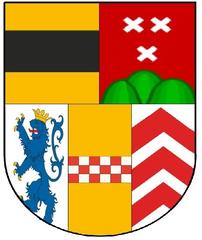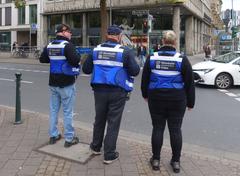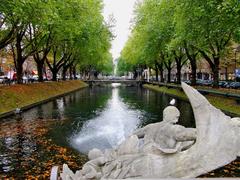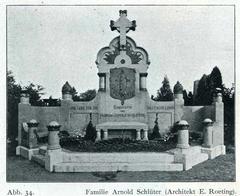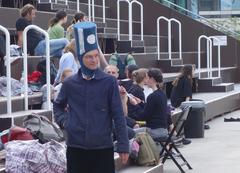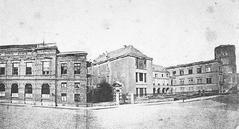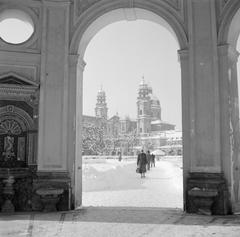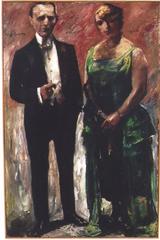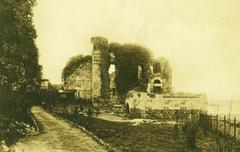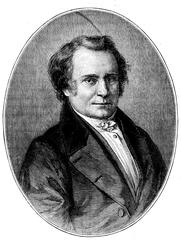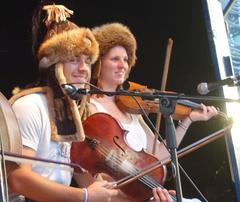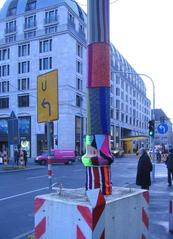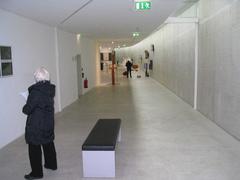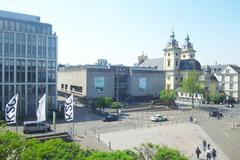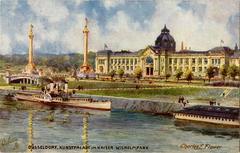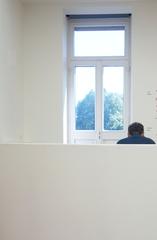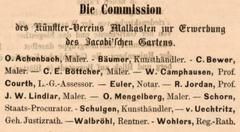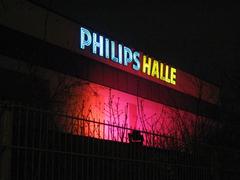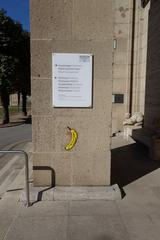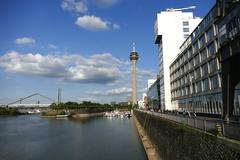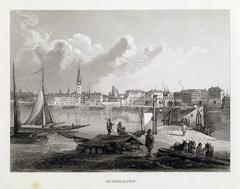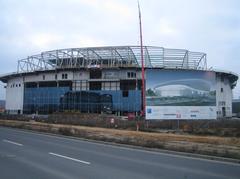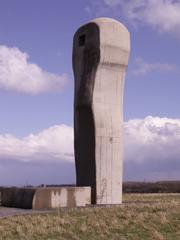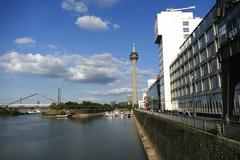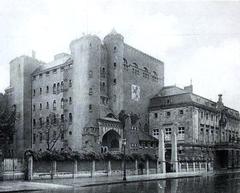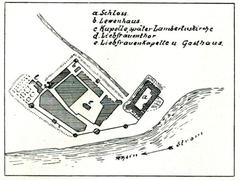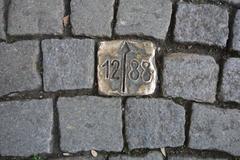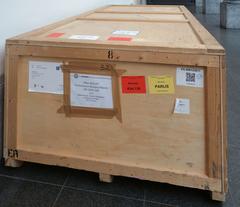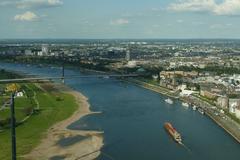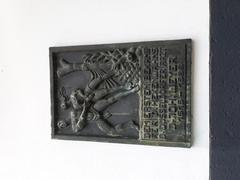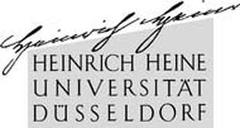
Basilika St. Margareta Visiting Hours, Tickets, and Historical Guide in Düsseldorf
Date: 04/07/2025
Introduction
Basilika St. Margareta, located in Düsseldorf’s Gerresheim district, stands as one of the region’s most significant and historic ecclesiastical landmarks. Founded around 870 AD by the nobleman Gerricus as part of the Gerresheimer Frauenstift (women’s collegiate foundation), the basilica has witnessed over a millennium of religious, architectural, and social transformation. From its Carolingian origins through its Romanesque, Gothic, and Baroque phases, St. Margareta has continually evolved, reflecting the layered history of the Rhineland. Despite the current closure for extensive interior renovations until at least mid-2026, the basilica’s monumental exterior, storied twin towers, and the vibrant Gerresheim district continue to attract visitors, pilgrims, and history enthusiasts alike. This comprehensive guide covers the basilica’s history, architecture, current visitor information, and practical travel tips to help you plan your visit. (Wikipedia, Official Website, Erlebnis Guide)
Table of Contents
- Origins and Foundation
- Architectural Evolution
- Cultural and Religious Significance
- Notable Historical Events
- Artistic and Architectural Treasures
- Visitor Information
- How to Get There
- Nearby Attractions
- FAQs
- Preservation and Heritage Status
- Plan Your Visit
- References and Further Reading
Origins and Foundation
The Basilika St. Margareta traces its roots to the late 9th century with the establishment of the Gerresheimer Frauenstift, serving as a religious and social center for noblewomen in the Archdiocese of Cologne. Gerricus, the founder, bequeathed his name to the district, and over time, the initially modest Carolingian church expanded into a major Romanesque basilica. For centuries, the Frauenstift played a central role in regional religious and social life, shaping the spiritual and cultural landscape of Düsseldorf. (Wikipedia)
Architectural Evolution
Romanesque Foundations
The main structure of the basilica, constructed in the 12th and early 13th centuries, displays the hallmarks of Romanesque architecture: massive stone walls, rounded arches, and a three-aisled basilica layout. The imposing twin towers and westwork completed around 1236 remain defining features. (Official Website)
Gothic and Baroque Enhancements
Subsequent centuries saw the addition of Gothic elements, such as pointed arches, ribbed vaults, and enlarged windows, enhancing the basilica’s light and verticality. The Baroque era brought richly decorated altars and chapels, some of which have been restored or removed to re-emphasize the medieval character. The basilica survived damages from the Thirty Years’ War and WWII, with major restorations taking place in the 20th and 21st centuries. (Wikipedia)
Cultural and Religious Significance
Collegiate and Parish Heritage
For over 900 years, St. Margareta served as a collegiate church for Gerresheimer Frauenstift, housing noble canonesses and functioning as a spiritual and economic center. The Frauenstift’s dissolution in 1803 transformed the basilica into a parish church, opening its doors to the broader Catholic community in Gerresheim and integrating several parishes in the 21st century. (Tripomatic)
Pilgrimage and Community Life
The church retains its significance as a place of pilgrimage, especially on St. Margaret’s Day (July 20th), and as a venue for major liturgical celebrations, concerts, and community events. Its bells, choir, and pipe organ continue to enrich the district’s spiritual and cultural life. (Erlebnis Guide)
Notable Historical Events
- Medieval Pilgrimages: Pilgrims visited the basilica to venerate relics, including those of St. Margaret.
- Reformation and Wars: The basilica withstood the religious upheavals of the Reformation and the devastations of the Thirty Years’ War, remaining a Catholic stronghold.
- Secularization: In 1803, ecclesiastical reforms ended the Frauenstift, and St. Margareta became a parish church.
- Recognition: Designated as a minor basilica in 1982, acknowledging its historical and architectural value. (Wikipedia)
Artistic and Architectural Treasures
- Romanesque Capitals & Baptismal Font: Notable 12th- and 13th-century stonework.
- Ottonian Cross: An over-life-sized cross from the 10th century, symbolizing continuity.
- Baroque High Altar: Richly carved and gilded centerpiece.
- Stained Glass Windows: Blend medieval and modern artistry, depicting biblical scenes.
- Gerresheimer Gnadenstuhl: Major fresco of the Trinity, a highlight of German monumental painting.
- Treasury: Houses medieval reliquaries and liturgical artifacts. (Kirchenschatz)
Visitor Information
Current Visiting Situation (2025–2026)
- Interior Access: Closed for renovation since January 2025, expected to reopen mid-2026. (Renovation details)
- Exterior: The basilica’s façade and surrounding grounds remain accessible for viewing and photography.
- Masses & Events: Most religious services are temporarily relocated to nearby churches; check parish announcements for schedules.
Address and Contact
- Address: Gerricusstraße 9, 40625 Düsseldorf, Germany
- Phone: +49 211 28 93 30
- Email: [email protected]
- Website: www.st-margareta.de
Admission
- Entry Fees: Free; donations appreciated for preservation.
Guided Tours
- Availability: Suspended during interior renovations; exterior and district tours occasionally available. Contact the parish office to inquire.
Accessibility
- Wheelchair Access: Step-free access to the nave and accessible restrooms in the parish center (availability may be limited during renovations).
- Information Panels: Multilingual boards outside provide historical and architectural context.
Visitor Amenities
- Restrooms: Located in the adjacent parish center.
- Gift Kiosk: Occasional sales of postcards and guidebooks during events.
- Nearby Facilities: Cafés, restaurants, and shops in Gerresheim’s center.
How to Get There
- Public Transport: S-Bahn (S8, S28, S68) to Gerresheim station; tram lines 703 and 709 (stop: Gerresheim Markt).
- Parking: Limited street parking; use public transport for convenience.
- Cycling: Bicycle racks available nearby.
Nearby Attractions
- Gerresheim Abbey Museum: Learn more about the district’s monastic history.
- Gerricusplatz: Picturesque historic square with shops and cafés.
- Düsseldorf Old Town: Accessible by tram, ideal for a city heritage tour.
- Other Sites: Friedhofskapelle, historic town hall, and green spaces nearby. (Baukunst NRW)
Frequently Asked Questions (FAQs)
Q: What are the basilica’s visiting hours in 2025–2026?
A: The interior is closed for renovation; only the exterior is accessible. Normally, hours are 9:00 AM–6:00 PM (Mon–Sat), 10:00 AM–6:00 PM (Sun/public holidays).
Q: Is there an entry fee?
A: No, admission is free; donations are welcome.
Q: Are guided tours available?
A: Interior tours are suspended during renovation, but occasional exterior tours may be offered.
Q: Is the basilica wheelchair accessible?
A: Yes, the main entrance and nave are barrier-free, but facilities may be restricted during renovations.
Q: Where can I find updates on reopening and events?
A: Always consult the official website and parish social media channels.
Preservation and Heritage Status
St. Margareta is protected under German heritage law and recognized as a cultural monument. Preservation is supported by parishioners, local heritage organizations, and the city of Düsseldorf. The basilica is listed on Baukunst NRW and is a highlight of regional architectural heritage tours.
Plan Your Visit
- Check renovation updates on the parish website before planning.
- Leverage public transport for ease of access.
- Combine your visit with a stroll through Gerresheim’s historic center and visits to local attractions.
- Download the Audiala app for immersive audio guides and event notifications.
- Follow St. Margareta on Instagram and Facebook for the latest news.
 Basilika St. Margareta’s iconic west façade and twin towers in Düsseldorf-Gerresheim
Basilika St. Margareta’s iconic west façade and twin towers in Düsseldorf-Gerresheim
 Interior view of the basilica’s nave with polychrome columns and groin vaults (pre-renovation)
Interior view of the basilica’s nave with polychrome columns and groin vaults (pre-renovation)
Summary
Basilika St. Margareta encapsulates the enduring spiritual and cultural legacy of Düsseldorf. As a monument of Romanesque architecture and a center of living heritage, it invites visitors to explore layers of history while offering a tranquil space for reflection—even during periods of renovation. With its accessible exterior, rich surrounding district, and active parish community, a visit to St. Margareta provides a unique window into the past and present of the Rhineland. Always check the latest updates before your visit and enhance your experience with digital resources and guided tours as they become available.
References and Further Reading
- Wikipedia
- Official Website
- Erlebnis Guide
- Tripomatic
- Baukunst NRW
- Visit Düsseldorf
- Renovation Updates
- Kirchenschatz







